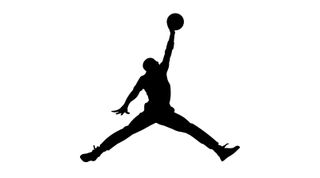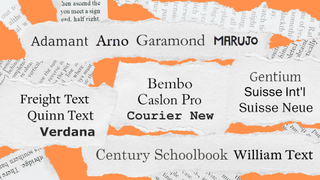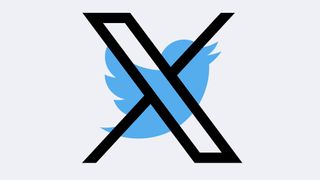14 huge trends that are changing the face of design and advertising
D&AD and The Future Laboratory reveal what you need to know to push the boundaries in your work.
Last week, over 200 of the world's finest creative minds gathered at The Old Truman Brewery in East London to debate who should – and shouldn't – receive a highly coveted Pencil at the 2015 D&AD Awards.
Judging week was different this year. Under the direction of President Mark Bonner, the organisation staged a packed programme of talks, workshops and inspiration, designed to offer insight into the industry and the awards scheme itself.
The event culminated with D&AD throwing open its doors on Thursday 23 April, giving the public the opportunity to see the year's best creative projects in an inspiring exhibition of Pencil-winning work. (You can find the full list here.)
On the same day, those who wanted an insight into the types of debate held and trends spotted by the 25 specialist juries could sign up for a series of 10 talks – covering categories such as Design, Creativity for Good, and Technology – while London-based trend forecasting consultancy The Future Laboratory hosted an exclusive session looking at how this year's entries are shaping the key trends of the future.
There was a lot to take in. If you couldn't make it, here are 14 things we learned at D&AD judging week…
01. The convergence economy is here to stay
In the lifestyle industries – everywhere from media to retail to fashion to technology – sectors are converging and collapsing together. The Future Laboratory call it 'super synaesthesia' – where your brand can be anything and walls are for tearing down.
Brands have to challenge themselves and explore new ways to express what they stand for and what their products mean. They're doing this through a modern synaesthesia, using senses to trigger other senses.
Get the Creative Bloq Newsletter
Daily design news, reviews, how-tos and more, as picked by the editors.
"It's no longer enough for a brand just to sell its products: it has to be a lifestyle brand, an entrainment brand, an educational brand – it has to be far more tangible than ever before," explained Jo Tulej, art director at The Future Laboratory.
02. Super synaesthesia is everywhere
One of the most ambitious, visceral examples of super synaesthesia – that proved popular with the D&AD jury in the Music Video category – was a Fleur and Manu-directed piece for Movement's track Ivory [above], which explored the colour of an orgasm.
But you can see synaesthesia everywhere, said Tulej. In the hotel industry, for example, brands are using performance hospitality and theatre to tell the story of their brand, giving visitors an emotional connection with where they're staying.
"In editorial - we call it 'editorial transmedia' – there are blurring lines between the physical and the virtual," she continued, adding that synaesthesia is increasingly being used to sell, particularly in the alcohol industry.
03. We can embrace technology without losing our own humanity
"Our digital and offline worlds are covering. We've become bedfellows with robots, we take advice from gadgets like Siri and we ask mega-systems for answers for life's questions," said The Future Laboratory creative director Kirsty Minns.
As the distinction between man and machine blurs, the importance of being human is more important than ever. "We've seen a shift to devices that can provide us with much more enriching feedback."
A popular project in the White Pencil category, Alvio, demonstrates this shift well. A breathing trainer, symptom tracker and mobile game controller, Alvio is aimed at asthmatic children. Players have to blow into the device to help a hungry fish find food.
As well as engaging its users, Alvio sends statistics to parents and notifies them of any breathing issues. "It's a great example of how technology is becoming more human," said Minns.
04. Having multiple personalities online isn't a bad thing
The internet is changing the way we think about ourselves. Social media has reformulated how we think about our personalities and the way we interact.
"We came up with the idea of identity sharding – splitting yourself up into multiple personalities. It's this idea of an elasticated self, so it's not that you're being false online, it's just a different part of yourself," said Daniela Walker, a journalist at LSN Global, adding that this trend of the 'sharded self' is increasingly affecting design and advertising.
05. Brands can use the 'sharded self' trend positively
Thanks to the internet, everyone has a voice. But it's not always the nicest voice: "There are a lot of trolls out there," pointed out Walker.
One trend seen in the work submitted to this year's D&AD Awards is that brands are starting to reformulate the negativity into a positive message. A standout project mentioned by both The Future Laboratory and the White Pencil panel was This Is Wholesome by Honey Maid, a traditional American snack brand that wanted to reposition itself as progressive.
Last year, Honey Maid launched a bold campaign featuring divorced, interracial and same-sex families. It brought the company a lot of attention – not all of it good. So this year, the brand responded to its trolls with another ad juxtaposing the hate with the love.
It took the negative tweets, printed them and made an instalation that spelled 'love', which it surrounded with positive tweets [above]. "If you want to be relevant, you have to be able to exist in the world that's happening around you," said Google Creative Lab executive creative director Steve Vranakis, who was on the White Pencil jury.
06. Audiences want to be challenged
"Consumers are adopting extreme temporary worlds and behaviours," said Hannah Robinson, visual editor at The Future Laboratory. Whether it's through dieting, media consumption or leisure time activities like Tough Mudder, consumers are taking an increasingly polarised approach to life.
"More than ever people want to be challenged and frustrated. They don't just want to be happy, they want to reach deeper levels of emotion," she said. "And there's less time to do this."
The Future Laboratory call this the 'Polarity Paradox' – and it's happening in popular culture too, with advertising campaigns, films and music videos (like Paolo Nutini's short film for Iron Sky, above) "embracing this idea of dystopian world versus utopian world".
07. Scare marketing is on the up
A micro trend that resonated through D&AD judging week was scare marketing – the idea of a campaign taking a viewer on a journey from anxiety through to relief.
Guy Cotten's 'A trip out to Sea' [above] embodyies this perfectly, said Robinson: "It's a visceral online experience that induces anxiety in the participant."
Campaigns are increasingly taking viewers on cognitive trips. "We've seen this across food design, packaging, graphics – everything. We came across some really interesting music videos that are embracing apocalyptic narratives and celebrating darker undertones."
Next page: seven more trends that are changing the face of design and advertising...

Thank you for reading 5 articles this month* Join now for unlimited access
Enjoy your first month for just £1 / $1 / €1
*Read 5 free articles per month without a subscription

Join now for unlimited access
Try first month for just £1 / $1 / €1
The Creative Bloq team is made up of a group of design fans, and has changed and evolved since Creative Bloq began back in 2012. The current website team consists of eight full-time members of staff: Editor Georgia Coggan, Deputy Editor Rosie Hilder, Ecommerce Editor Beren Neale, Senior News Editor Daniel Piper, Editor, Digital Art and 3D Ian Dean, Tech Reviews Editor Erlingur Einarsson and Ecommerce Writer Beth Nicholls and Staff Writer Natalie Fear, as well as a roster of freelancers from around the world. The 3D World and ImagineFX magazine teams also pitch in, ensuring that content from 3D World and ImagineFX is represented on Creative Bloq.




